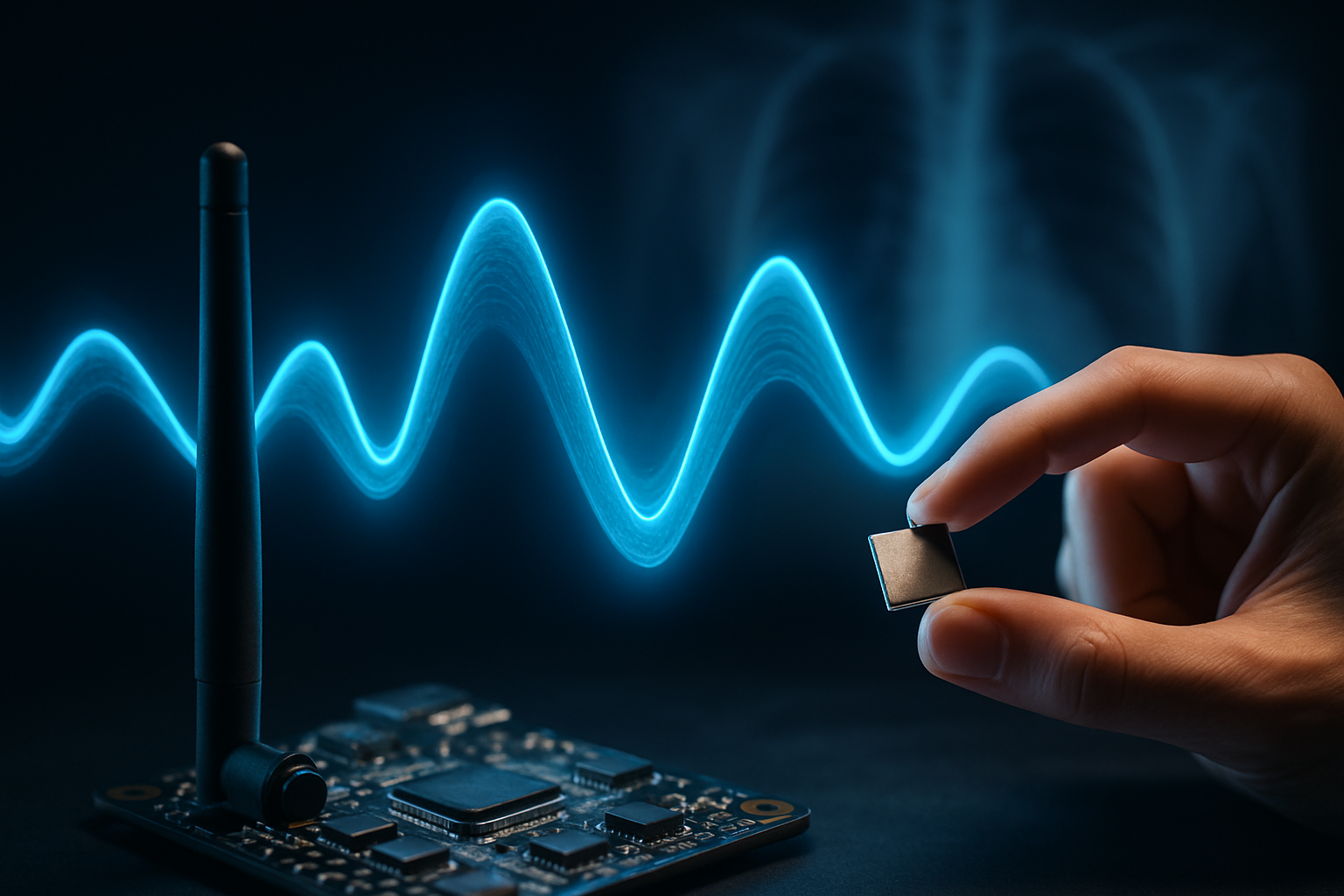The Dawn of Terahertz Wireless Communication
Imagine a world where data transfer speeds are so fast, they're almost instantaneous. A realm where wireless networks can handle massive amounts of information without breaking a sweat. This isn't science fiction—it's the promise of terahertz wireless communication, a groundbreaking technology poised to revolutionize how we connect and communicate in the digital age.

The exploration of terahertz communication isn’t new, but recent advancements in materials science and semiconductor technology have brought this once-theoretical concept closer to reality. Researchers have been working tirelessly to overcome the challenges associated with generating, detecting, and manipulating terahertz waves efficiently.
The Promise of Ultra-High-Speed Data Transfer
One of the most exciting aspects of terahertz wireless communication is its potential for ultra-high-speed data transfer. Current wireless technologies, even the latest Wi-Fi standards, pale in comparison to the speeds that terahertz communication could offer. With data rates potentially reaching terabits per second, entire libraries of information could be transferred in the blink of an eye.
This leap in data transfer speeds could transform various industries. In healthcare, for instance, high-resolution medical images could be transmitted instantly, enabling real-time remote diagnostics and consultations. In the entertainment industry, it could allow for the seamless streaming of ultra-high-definition content without any buffering or lag.
Overcoming Technical Hurdles
Despite its immense potential, terahertz wireless communication faces several technical challenges. One of the primary obstacles is the high absorption of terahertz waves by water vapor in the atmosphere, which limits their transmission range. This means that, at least initially, terahertz communication systems may be more suitable for short-range, high-bandwidth applications.
Another challenge lies in developing efficient and cost-effective components for generating and detecting terahertz waves. Traditional electronic devices struggle to operate at such high frequencies, necessitating the development of new materials and device architectures. Researchers are exploring various approaches, including the use of graphene and other two-dimensional materials, to create terahertz-capable components.
Applications Beyond Communication
While wireless communication is a primary focus, the potential applications of terahertz technology extend far beyond. In security and imaging, terahertz waves can penetrate many materials that are opaque to visible light, allowing for non-invasive scanning and detection of hidden objects. This could revolutionize airport security, quality control in manufacturing, and even art conservation.
In spectroscopy, terahertz waves can provide unique insights into molecular structures and dynamics, opening new avenues for scientific research and drug discovery. The technology could also find applications in ultra-precise sensing and positioning systems, potentially enhancing the capabilities of autonomous vehicles and drones.
The Road to Commercialization
As with any emerging technology, the journey from laboratory to commercial application is fraught with challenges. Regulatory bodies worldwide are still grappling with how to allocate and manage the terahertz spectrum. Additionally, significant investment in research and development is required to make terahertz components more affordable and reliable for mass production.
Several companies and research institutions are at the forefront of terahertz technology development. They are working on everything from compact terahertz transmitters and receivers to novel antenna designs optimized for terahertz frequencies. As these efforts progress, we may see the first commercial terahertz communication systems deployed in niche applications within the next few years.
Environmental and Health Considerations
As with any new technology, especially one involving electromagnetic radiation, there are concerns about potential environmental and health impacts. While terahertz waves are non-ionizing and generally considered safe at low power levels, more research is needed to fully understand any long-term effects of exposure.
From an environmental perspective, the energy efficiency of terahertz systems is a crucial consideration. The ability to transmit large amounts of data quickly could potentially reduce overall energy consumption in communication networks. However, this must be balanced against the power requirements of terahertz components, which are still being optimized.
Integrating with Existing Infrastructure
For terahertz wireless communication to become a reality, it must be integrated with existing communication infrastructure. This involves developing hybrid systems that can seamlessly switch between terahertz and lower-frequency communications depending on environmental conditions and bandwidth requirements.
Researchers are exploring ways to create multi-band systems that can leverage the strengths of different parts of the electromagnetic spectrum. For instance, a communication system might use terahertz frequencies for short-range, high-bandwidth transfers while relying on traditional microwave frequencies for longer-range, lower-bandwidth communications.
The Future of Terahertz Communication
As we stand on the brink of this technological breakthrough, the future of terahertz wireless communication looks both exciting and challenging. The potential for ultra-high-speed, high-capacity wireless networks could transform how we interact with technology and each other. From enabling new forms of augmented and virtual reality to facilitating the seamless integration of AI into our daily lives, terahertz communication could be the key to unlocking the full potential of our increasingly connected world.
However, realizing this potential will require continued investment, research, and collaboration across academia, industry, and government. As we navigate the complexities of this emerging technology, we must remain mindful of its broader implications for society, privacy, and digital equity.
The dawn of terahertz wireless communication is upon us, promising a future where the boundaries of connectivity are pushed to new limits. As this technology matures, it will undoubtedly play a crucial role in shaping the next generation of telecommunications and beyond.





